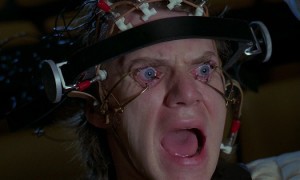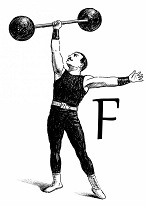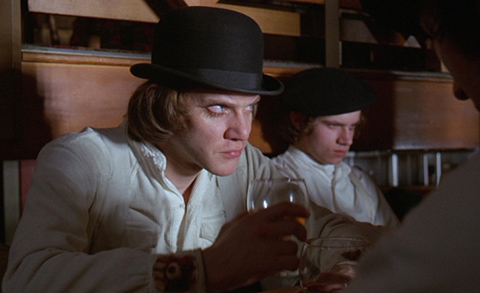I had only watched two movies conjured from the twisted mind of filmmaker Stanley Kubrick, each producing a polarizing and opposite result. The first was the thriller masterpiece “The Shining,” which became my favorite horror film and earned a permanent spot in my October horror movie chamber. The second was the epic “2001: A Space Odyssey.” Lauded by movie historians as one of the greatest films of all time, it fell painfully short of expectations as a worthless piece of overrated drivel. I had a sneaking feeling that the latter was the standard result of a Kubrick film, but overruled my better judgment by watching his 1971 piece “A Clockwork Orange.” Five minutes in and my suspicions were confirmed.
Based on the novel by Anthony Burgess, “A Clockwork Orange” takes a counterculture concept and blends it with violence, creepiness, and a drowning amount of sexual imagery (from subtle phallic symbols to full on gratuitous gang rapes) the result being one of, if not the worst pieces of trash anyone could possibly fathom.
Like “ASO,” “A Clockwork Orange” is something only the elite genius minds and savants of art can enjoy. If you don’t fall into either of those camps, you’ll mimic me – wasting two hours of your life with a look of utter dismay splashed across your face as you watch and attempt to discern just what the hell is going on.

We begin with Alex (Malcolm McDowell) and his gang of droogs; Georgie, Pete, and Dim, on a night of binging. The gang careens around a futuristic dystopia of London in a stolen car, stopping to bludgeon a homeless man and pick a fight with a rival gang. The night ends when the horde of miscreants con their way into the estate of a writer (Patrick Magee) where they beat him to near death before Alex, wearing a creepy mask and crooning “Singin’ in the Rain,” graphically rapes his wife.
The next day, a truant Alex is visited by a perverted probation officer (Aubrey Morris) who is hip to Alex and his crimes. After groping Alex in the groin, the scene ends and I still had no idea what was going on and several questions were raised. Why is the probation officer fondling Alex? Alex is truant from school? He looks too old for school. Is he forty-five? Is he fifteen? It’s supposed to be one of the best movies of all time so I must be missing something. I decide to continue.
 The next night, the gang begins to separate themselves from Alex’s control. After Alex enters another woman’s house, he kills her with a giant penis and testicles sculpture she has in her home (no, you did not misread that) but the gang, no longer loyal, allow Alex to be captured by the police and he is sentenced to fourteen years in prison for the murder. On the inside, Alex is subjected to psychological testing aimed at rehabilitating his violent ways. The testing enables him to be released into society as “cured,” but at what cost?
The next night, the gang begins to separate themselves from Alex’s control. After Alex enters another woman’s house, he kills her with a giant penis and testicles sculpture she has in her home (no, you did not misread that) but the gang, no longer loyal, allow Alex to be captured by the police and he is sentenced to fourteen years in prison for the murder. On the inside, Alex is subjected to psychological testing aimed at rehabilitating his violent ways. The testing enables him to be released into society as “cured,” but at what cost?
Nominated for four Academy Awards, and thankfully winning zero, “A Clockwork Orange” received heavy criticism due to the score of violent imagery. When you don’t have talent, you’re forced to infuse shock techniques to garner attention, and Kubrick demonstrates in a two hour window how little talent he actually had.
I guess there’s some deep rooted ulterior meaning to the story. Our culture is obsessed with sex? Society is preordained to violence? The government is evil and should not be trusted? I’m not sure. The only deep rooted ulterior meaning I got was that Stanley Kubrick made a career by employing a smoke in mirrors technique to fool people into thinking he was a brilliant director.
After watching “A Clockwork Orange” I want to find the book and burn it. I want to take all copies of the movie and bury them in tar.
I want enlightened. I was thoroughly disgusted.
– by Matt Christopher


